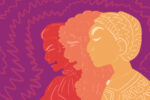“The Twilight Saga” is ranked 20th among the bestselling novel series of all time. Over 120 million copies were sold, the books spent over 235 weeks on The New York Times bestseller list and they were adapted into five highly successful movies.
However, even among these dazzling statistics, it’s still one of the most highly-criticized works of fiction of the past 10 years. The first film was even named the worst movie of all time back in 2012, which should elicit some doubt, given that it grossed over $300 million at the box office.
Similarly, One Direction had 48.8 million album sales in the 2010s, ranking them in the top 10 most successful bands of the decade. Before breaking up, they toured stadiums averaging over 49,000 attendees a night (once reaching over 300 million audience members), partnered with high profile brands to create products and merchandise, and to this day still have over 17 million monthly listeners on Spotify alone.
And still, they weren’t respected as “good” music. A group that is statistically extremely successful still faced some of the most intense social loathing of their time. Maura Johnston for The New York Times accurately summarized most of the criticism, saying: “They inspire a familiar litany of complaints: they’re “manufactured”; they skate by on looks, not talent; their music is annoying. Many of these complaints come from people who consider themselves fans of ‘authentic’ music.”
So why are certain cultural phenomenons hated and so easily written off when they clearly have millions of adoring fans? Because they’re loved by young girls.
I’ll give you more examples: Justin Bieber, “The Bachelor,” The Jonas Brothers, “The Kissing Booth” (and other romantic comedies)… you see where I’m going. Some of the biggest players in pop culture are not respected because their primary fans are young women. And all this really says is that the opinion of young women is not respected.
Once teenage girls find something they love, you can predict that it will just as quickly be dismissed in the eyes of most everyone else. There’s a stereotype that young girls are just buying into marketing and products or celebrities designed for them, as if no other group of people does this too.
It perpetuates the idea that capturing the attention of a young girl is “easy” and therefore anyone who makes something for them isn’t deserving of their popularity and acclaim. This “trend” of shaming and belittling the interests of teenage girls reinforces a subconscious ideology from a very young age that their opinions aren’t good enough or valid enough. I would argue that if any other social group was the main fanbase for Stephanie Meyers’ books or a boy band from England, their work, impact and success wouldn’t be so harshly debated.
Going deeper, there are many artists who broke into mainstream popularity by way of young women, but that’s often forgotten or overlooked once another social demographic deems them worthy. Think Harry Styles with “Dunkirk” or his debut solo album, “Harry Styles.”
Or the fact that The Beatles are now considered one of the most important bands in history, yet were heavily judged when their first supporters were female adolescents. It leaves teenage girls thinking “yeah, we’ve been saying this the whole time,” however, they’re rarely given the due credit.
But it’s not just the movie, singer, book or TV show that comes under fire. It’s the fans, the girls themselves, too. Teenagers are mocked and made fun of by their peers simply because they enjoy something. Imagine feeling ridiculed for the sole reason that you find something entertaining, an act that doesn’t affect anyone else. But, as hurtful as classmates and other kids can be, the media might be the worst assailant.
Jonathon Heaf for GQ wrote, speaking about One Direction fans, “By now we all know the immense transformative power of a boy band to turn a butter-wouldn’t-melt teenage girl into a rabid, knicker-wetting banshee who will tear off her own ears in hysterical fervor when presented with the objects of her fascinations,” later saying: “These women don’t care about the Rolling Stones. They don’t care about the meta-modernist cycle of cultural repetition. They don’t care about history. All these female fans care about is their immediate vociferous reverence: the beatification of St Harry, St Zayn, St Niall, St Louis and St Liam.”
In two paragraphs Heaf has unfairly generalized and mocked an entire group of people, comparing them to banshees, stereotyping their interests and — I’ll just say it — calling them dumb. Unfortunately, he was not the first, and he won’t be the last.
In a now-famous New Statesman article, Paul Johnson said something strikingly similar about Beatles fans: “Those who flock round the Beatles, who scream themselves into hysteria, whose vacant faces flicker over the TV screen, are the least fortunate of their generation, the dull, the idle, the failures.”
And it’s still happening to this day. Amanda Petrusich for the New Yorker said of BTS fans, “The audience reaction shots from the band’s performance at the Billboard Music Awards earlier this month revealed young women going cuckoo, clutching themselves in a kind of hysterical rapture.”
Among the already problematic connotations and descriptions of these girls, one phrase pops up in all quotes: hysteria and hysterical. For as long as the term has existed, the phrase hysteria has been attached to women the way peanut butter is to jelly.
It actually dates way back to fifth century B.C. in Ancient Greece. The term comes from the Greek word “hysterika” which means uterus. In the time of Plato and Hippocrates, when modern medicine didn’t exist and human biology wasn’t really understood, physicians attributed fainting, anxiety, mood swings and more to a “roaming uterus.” They quite literally believe that the uterus moved around the body and disrupted other organs causing erratic behavior.
But, it didn’t stop with the Greeks. Hysteria was the first recognized and diagnosable mental disorder that specifically targeted one sex. It was until 1980 that it officially left the DSM (essentially the bible for psychiatric diagnoses).
Many of the “symptoms” of what doctors referred to and diagnosed as hysteria included fainting, shortness of breath, nervousness, sexually forward behavior and the “tendency to cause trouble for others.” Ironically enough, nothing from this list is exclusively female behavior, but if a woman exhibits any of them, she specifically is diseased.
Aristotle, when referencing hysteria, tried to explain the difference between a woman and a man by saying a woman was a “deformed” or “mutilated” male. The Greeks often used hysteria as a way to assert dominance over women, ensuring they stayed out of political offices or places of power because they were too “out of control,” too “irritable,” too “irrational.”
Maybe the connotations of this word have slightly changed, but the implications haven’t. When we call teenage girls “hysteric” over their idols and condemn them for lining up for hours to see the next installment of a vampire-human love story and when we dismiss their interests and write off their undeniable influence in pop culture, we’re no better than the ancient Greeks.
We’re preaching the exact same message: that teenage girls can’t make a rational decision, are not in control of their actions, and are full of erratic desires, therefore, can’t be taken seriously. “One Direction isn’t good because teenage girls are crazy.” “Twilight is bad because young women aren’t self-aware enough to know otherwise.”
This strikingly unfair assessment carries through into adulthood. Vogue published a piece linking the definition and historical background of the word hysteria with the way adult women are perceived in politics. When women marched for equality and biological rights they were classified as “crazies” who flew into “hysterics and tantrums.” There’s no shortage of examples of women basically being hailed as mentally unstable for standing up for things they believe in.
I grew up feeling cautious about the things I liked because I knew the power I had as a young girl to make something instantly inadequate and second-rate in the eyes of society. Recently, in a workshop-style class on novel writing, I presented the first five chapters of a young adult book I was working on. I could sense the judgment and I felt the room not take me seriously.
There was no point for my peers in creating something primarily for younger women because it was “too easy,” “too childish” and wholly unimportant, further implying that these adjectives were not just attached to my project but the readers too.
So where do we go from here? I truly wish I knew. It never seems enough to just say it. We wonder why things like “The Confidence Gap” exists. We wonder why even as we get closer to gender equality we still live in a patriarchal world. It has to start at the beginning.
If we want to raise strong women, we have to help raise their voices in adolescence — teach them that their opinions are valid and their interests are worthwhile. We have to stop acting like anything a young girl touches holds no real value in our society. We have to show them that what they care about matters. We don’t have to like what they like, but we have to stop hating it.
















